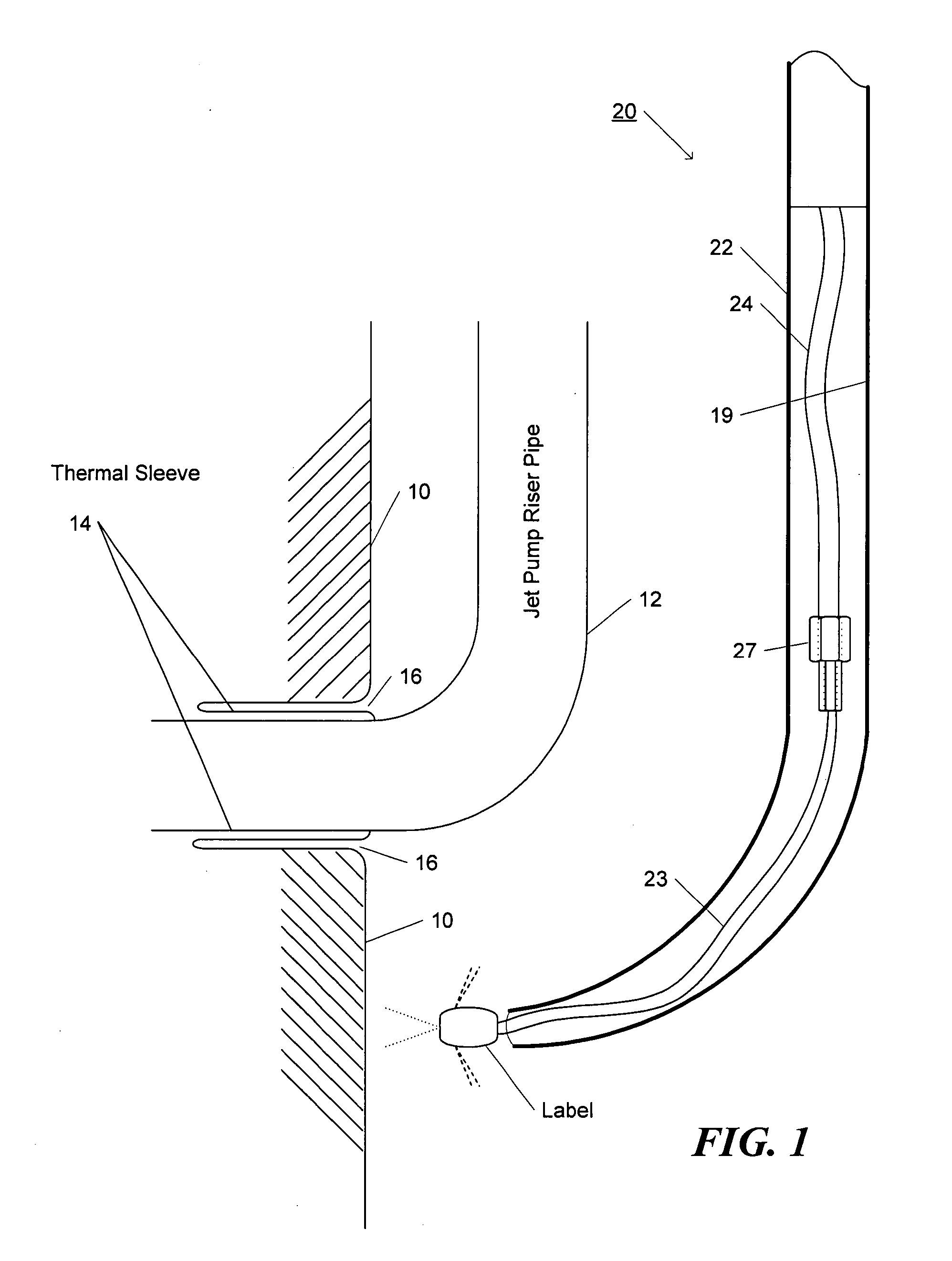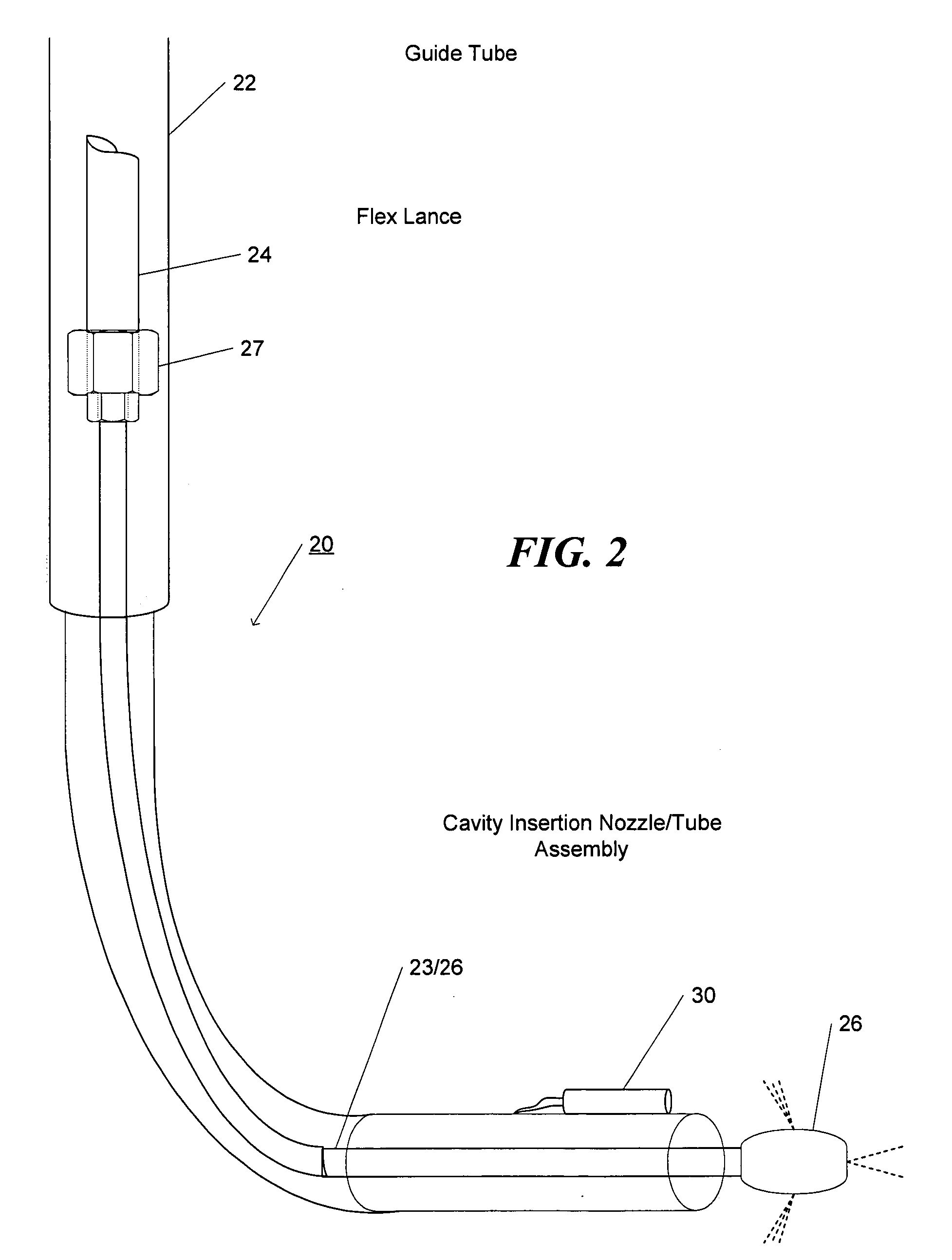Method and apparatus for high pressure water jet lancing of foreign materials from surfaces of a nuclear power reactor
a nuclear power reactor and foreign material technology, applied in the direction of cleaning process and apparatus, chemistry apparatus and process, hollow article cleaning, etc., can solve the problems of difficult removal process, high radiation dosage to personnel, and difficulty in effectively removing all crud prior to maintenance and inspection of the reactor
- Summary
- Abstract
- Description
- Claims
- Application Information
AI Technical Summary
Benefits of technology
Problems solved by technology
Method used
Image
Examples
Embodiment Construction
[0030]FIGS. 1-3 illustrate a remotely controllable apparatus 20 for the removal of “CRUD” from remote areas of limited accessibility within a nuclear Reactor Vessel, including the annulus area around and inside the thermal sleeve at the lower elbow assembly of the jet pump riser pipe assembly. The apparatus 20 comprises a multi-section guide tube assembly 22 encasing a high pressure water jetting lance assembly 25 comprising a feeder lance 24 intercoupled to a cleaning lance 23 which carries a nozzle 26 at an end thereof. The more proximal end of lance assembly 25, feeder lance 24, is attachable to a high pressure pump system 7 with a working pressure capability of 20,000 psi, through appropriate couplings rated for the working pressure, as determined by the designer. In apparatus 20, the jetting lance assembly 25 is movably disposed within a central lumen 19 of guide tube 22 to enable the positioning of cleaning lance 23 and nozzle 26 relative to do the distal tip of the guide tube...
PUM
 Login to View More
Login to View More Abstract
Description
Claims
Application Information
 Login to View More
Login to View More - R&D
- Intellectual Property
- Life Sciences
- Materials
- Tech Scout
- Unparalleled Data Quality
- Higher Quality Content
- 60% Fewer Hallucinations
Browse by: Latest US Patents, China's latest patents, Technical Efficacy Thesaurus, Application Domain, Technology Topic, Popular Technical Reports.
© 2025 PatSnap. All rights reserved.Legal|Privacy policy|Modern Slavery Act Transparency Statement|Sitemap|About US| Contact US: help@patsnap.com



